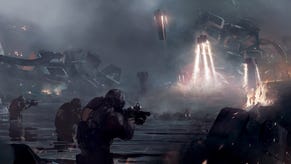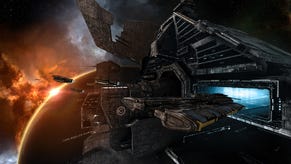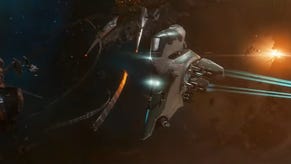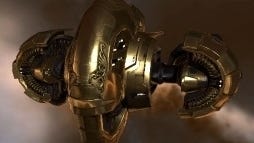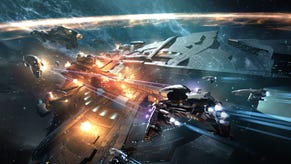EVE: CCP Gives A Damn
"We show them how the hot dogs are made."
Torfi Frans Olafsson, the creative director of EVE Online, doesn't answer to a board of a dozen faceless suits. He answers to 330,000 paying subscribers and their elected representatives, the Council of Stellar Management.
EVE Online stands alone in the MMO world for a variety of reasons: its Council of Stellar Management, its obtuse design, its microcosmic politics, its gigantic umbrella server and its rock-solid community, which has been playing since 2003. But Olafsson's creation is far from untouchable and EVE Online has suffered under harsh player scrutiny due to features that don't work - fleet battles that don't do what they say on the tin, and developers who don't listen.
To appease them, CCP will launch a new expansion this winter called Incursion. It's stuffed with fixes suggested by the Council of Stellar Management. But that won't satisfy the hungry belly of the community for long, so it's lucky Torfi Frans Olafsson has a feast of features waiting in the wings.
We sometimes consider it a problem how vast the game has become. We have to remember that it came out initially in 2003, but of course the game then was a mere shadow of what it has become.
Every six months we've had expansions - some of them smaller, some of them larger. We look at it much more as a world than as a game - a combination of multiple interconnected systems.
People often complain about the steep learning curve of EVE. I agree it's steep if you're trying to learn the entire game, but you can play parts of it and be happy for years.
There are 330,000 or 340,000 people, roughly, that subscribe to EVE today. Then we have a large number of people who are trials, of course.
Fleet battles have existed since the birth of EVE and they've always grown larger and larger. Because the game is so open-ended and we don't put a cap on how many people assemble in one space - the cap is around 1200 or 2000 players in one solar system or something like that - the players assembled in bigger and bigger groups progressively as the game advanced.
Some years ago, fleet battles could only have 200 or 300 players before the server started lagging out or graphically the machines couldn't handle it. But in recent years these numbers have been growing to 500 and up to 1000, 1200.

I can't imagine any other game that does this. These are real-time, really strategic engagements between a fleet of 1200 actual players; there's no drone NPCs, it's just players in a very structured and organised manner fighting out battles.
What happened is that we had performance problems. In our past couple of expansions we did changes to the server code that resulted in degrading of performance, meaning that these players experienced some circumstances that we found very hard to recreate internally: lagging out and some performance problems.
We had a large group of engineers focus-fired on isolating these performance problems by doing mass tests and logging into EVE in the middle of the night to monitor a fleet engagement in real-time, write code and make changes and deeply analyse the service.
It is very complicated to deal with these problems; one of the most complex computer-science engineering problems you might find. We are rolling out a number of fixes leading up to new expansion Incursion and in Incursion itself.
What I predict will happen is that players will experience improved performance and then they will go away and start assembling groups of 4000 and 5000 and start complaining. People want strength in numbers, and it will be an ongoing battle for our engineers to support these large-scale engagements.
These, for our players who participate in them, are the finest gaming moments you can ever have.
We have mostly been focusing on software. We are experimenting with installing new IBM hardware and we will be putting several solar systems on to these new blades to see what improvement that gets you.
Switching hardware can improve performance by five per cent, by three per cent - something like that. You very rarely double performance or triple performance or do anything serious by upgrading hardware a little bit.
However, with major architectural changes to your algorithms and scattering functions and networking functions and so on, you are actually able to fix things by an order of magnitude [more]. Those actions we are focusing on.



